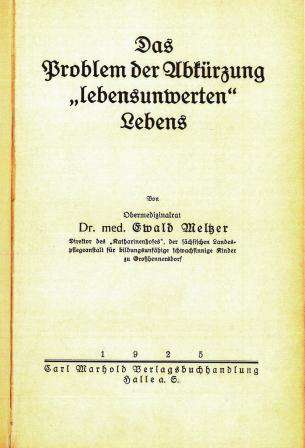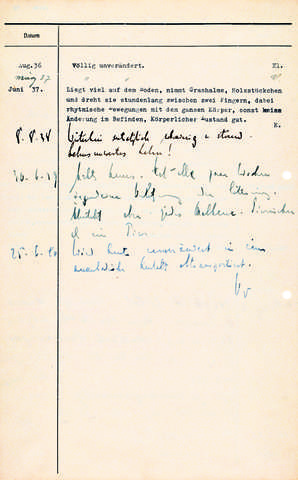The debate about the »annihilation of life unworthy of life«
The Greek word euthanasia signifies »good death« and means the medical attendance of seriously ill and dying people.
Its meaning changed in the late 19th century: doctors were supposed to deliver terminally ill people from their suffering by putting an end to the lives of their patients. In 1895, the philosophy student Adolf Jost (1874–1908) called for the legal approval of euthanasia and thus the »right to die« in Germany for the first time. Reasons for this were supposed to be compassion for the seriously ill and the lack of benefits their lives offered.
After the First World War, the debate became more radical: jurist Karl Binding (1841–1920) and psychiatrist Alfred Hoche (1865–1943) called for the approval of the »annihilation of life unworthy of life« and thus the killing of mentally ill and disabled people. In their state of »mentally death«, they had neither the will to live nor the will to die. They were overtly referred to as »dead weight existences« (»Ballastexistenzen«).
While the killing of young children with disabilities was discussed among racial hygienists as a way to improve the hereditary nature of the »Volkskörper«, the »body politic«, the »annihilation of life unworthy of life« was mainly justified on economic grounds.

© Carl Marhold Verlagsbuchhandlung, Halle/Saale

© Bundesarchiv Berlin R 179/22496